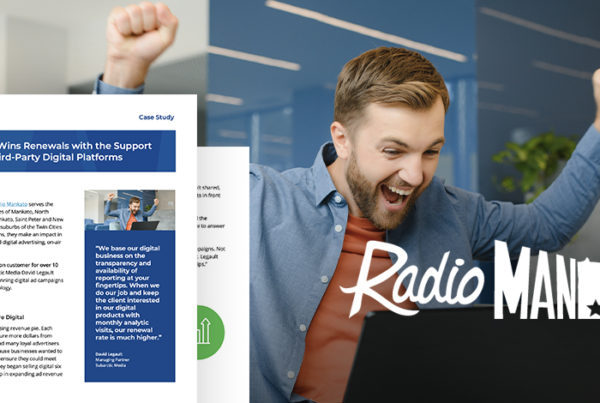A process with many manual tasks and inconsistencies has far-reaching implications. It requires too much time, energy and resources, impacting productivity and revenue. One area where this is challenging for radio is AR. By optimizing payment workflows, you can achieve efficiency and visibility.
In this post, we’ll discuss the barriers and how to modernize your payments ecosystem.
What Makes Payment Workflows Efficient?
In the big picture of the AR ecosystem, radio stations need a streamlined process from invoicing to reconciliation. Typically, this would involve:
- Electronic invoicing (ideally consolidating all ad buys: spot, digital, O&O, etc.)
- Secure email delivery of invoices
- Customer portal and guest checkout for electronic payments (ACH and debit and credit cards)
- Funding from electronic payments
- Payment importing from third-party sources, including lockboxes
- Reconciliation in the AR system
In an optimized workflow, these steps would flow relatively seamlessly, requiring minimal manual effort. Yet, that’s not the experience for most. Instead, there is considerable manual work and data reentry happening. It’s extra work and can be rife with errors.
In many cases, stations only have some of these features, so there are barriers to achieving an efficient workflow.
Radio Wants Efficiency-Focused Features
In our recent radio traffic survey, professionals told us these functions were most critical:
- Electronic invoicing
- Self-serve customer credit card/ACH payment portal
- Automatic import and application of payments into AR
- Collections tools integrated with AR
- Streamlined credit card/ACH payment guest checkout experience without login
- Integrated digital billing
- Multistation electronic invoices
Every feature on this list contributes to efficiency!
More Must-Haves for Efficiency
In addition to those capabilities, a modern payment solution only requires one login. You don’t have to go back and forth between payments and traffic. Over time, these minutes add up and impact productivity.
Having sales assist with collections can be efficient, too, with the right technology. Historically, this has involved pulling and printing reports that may or may not be current.
A collections tool that salespeople can use, showing only their customers, eliminates any extra work for finance. Within the system, they can access customer information, send a guest checkout link and process payment. It’s a fast, easy option that can get past dues handled.
What Are the Visibility Challenges in Payments?
The other advantage of an optimized workflow is greater visibility. If payments are decentralized and non-integrated, you can’t see all transactions and data without a lot of manual intervention.
That leads to confusion about days outstanding metrics and can also impact collection efforts downstream. It’s especially chaotic if you still receive a high number of paper checks and mail out hard-copy invoices.
Reconciliation can also become fractured when you lack an integrated payment workflow. All information has to be reentered into the AR system. Errors can occur, and you don’t have real-time information on what’s been paid and what’s past due.
What Else Can an Improved Payment Workflow Provide?
Efficiency and visibility across finances are primary benefits. Everything can run much smoother for AR with an integrated workflow. You can also receive faster funding because there won’t be delays from processors sit outside of your systems.
You’re likely to see faster payments as well, with automated invoice delivery and customers being able to pay in one click.
Workflows That Work: PayNow
Modernizing payments requires technology that meets your specific needs. It must connect closely with your traffic system. Otherwise, you won’t realize efficiency and visibility. That’s why we built PayNow.






